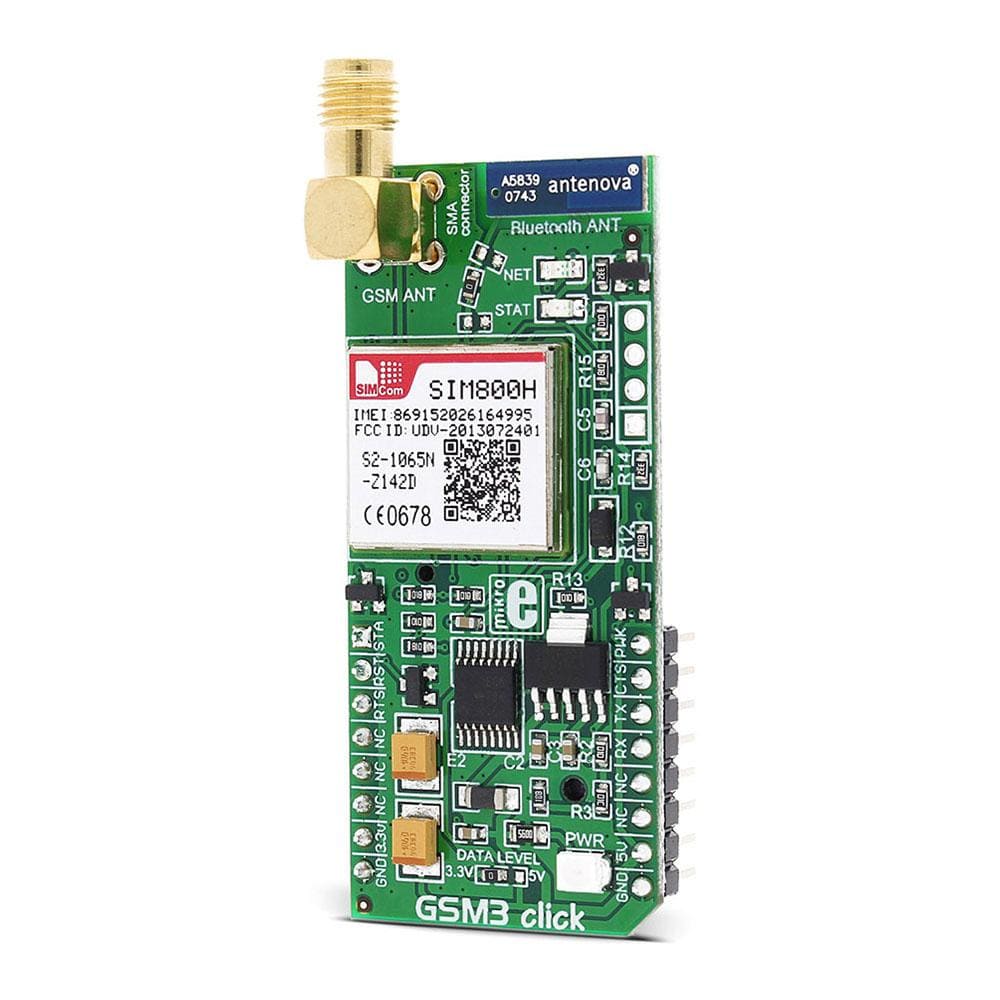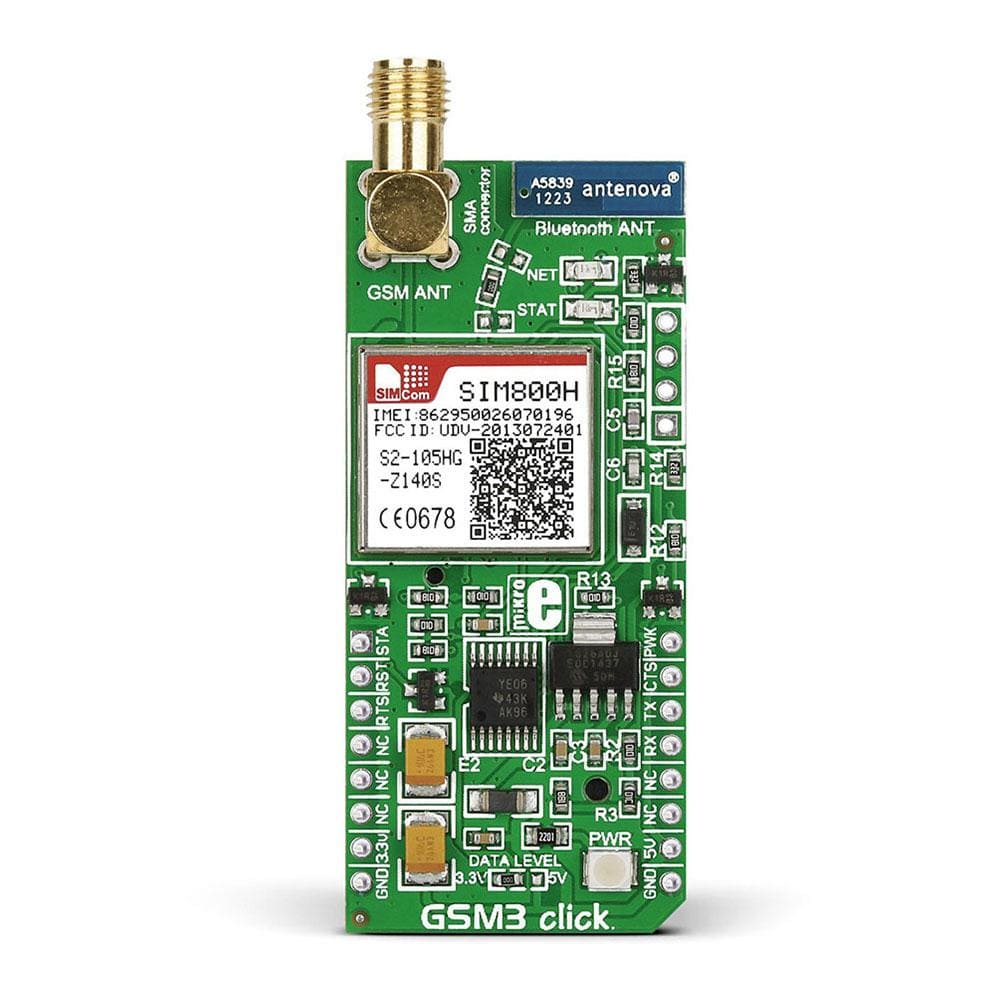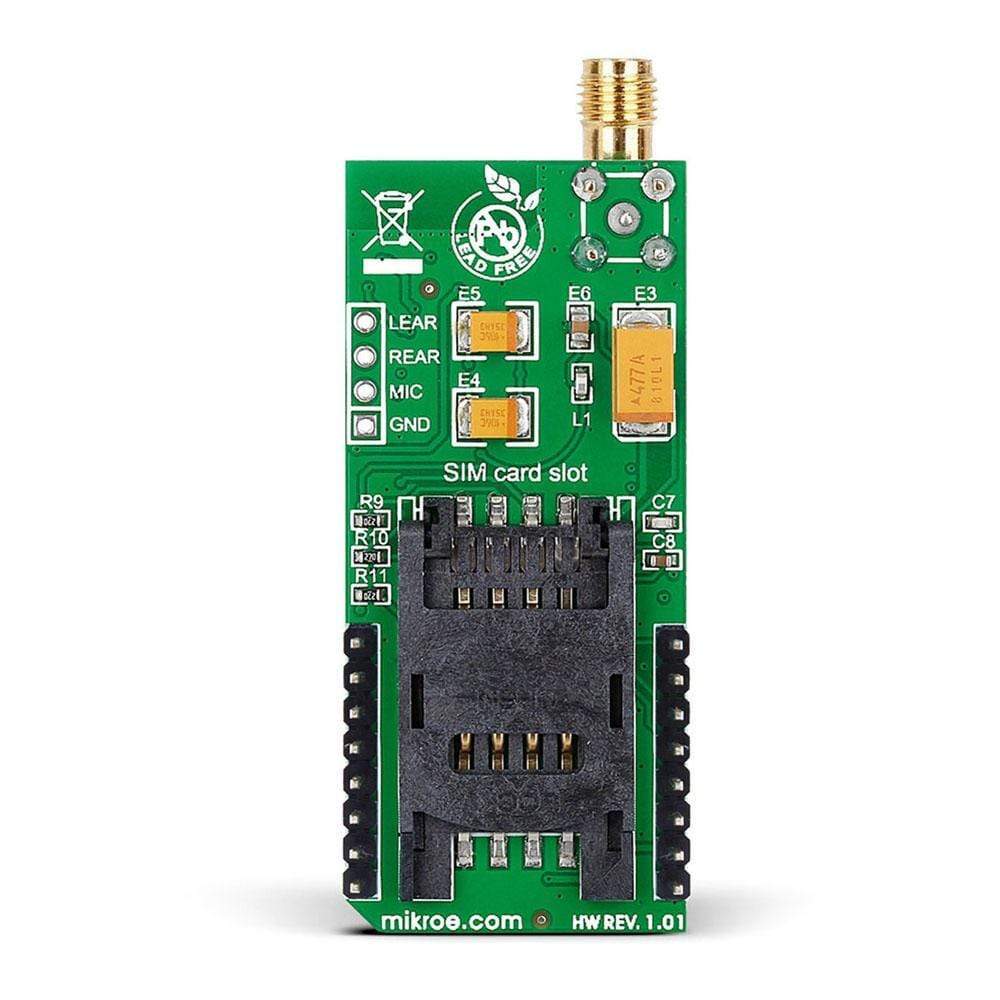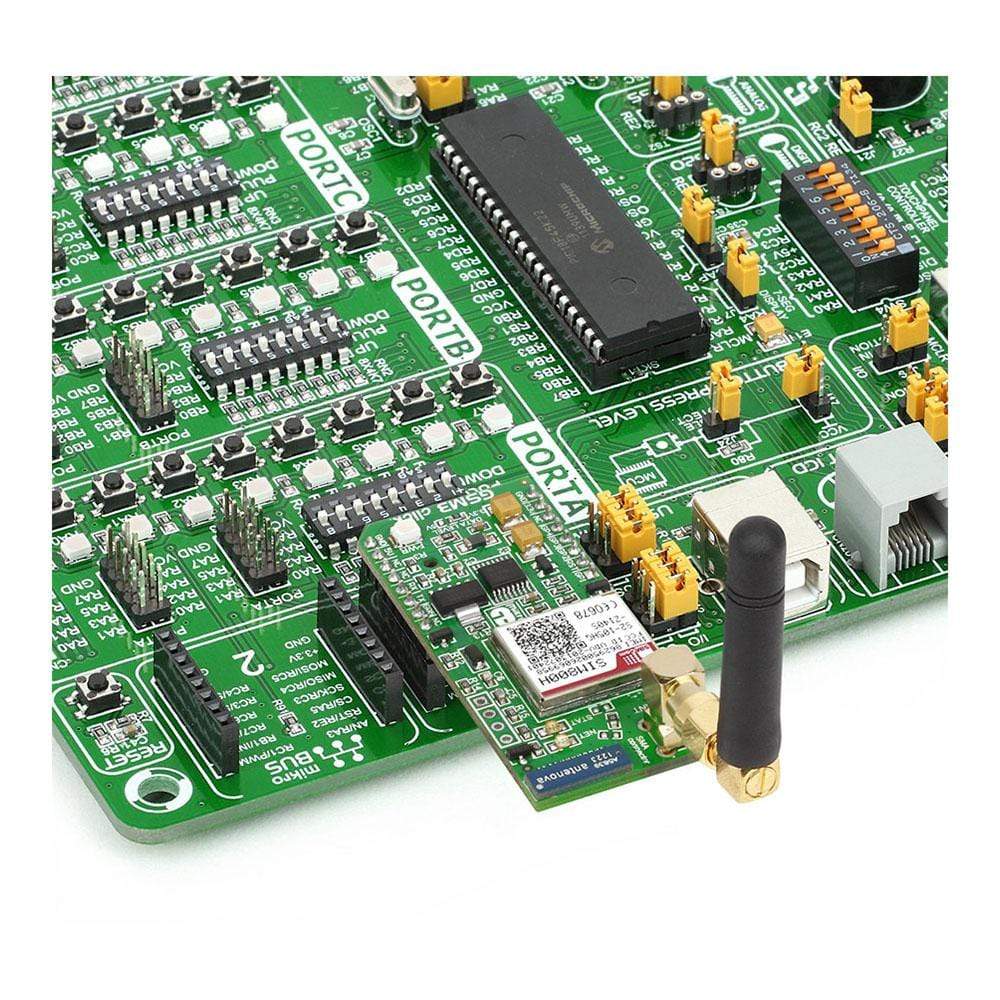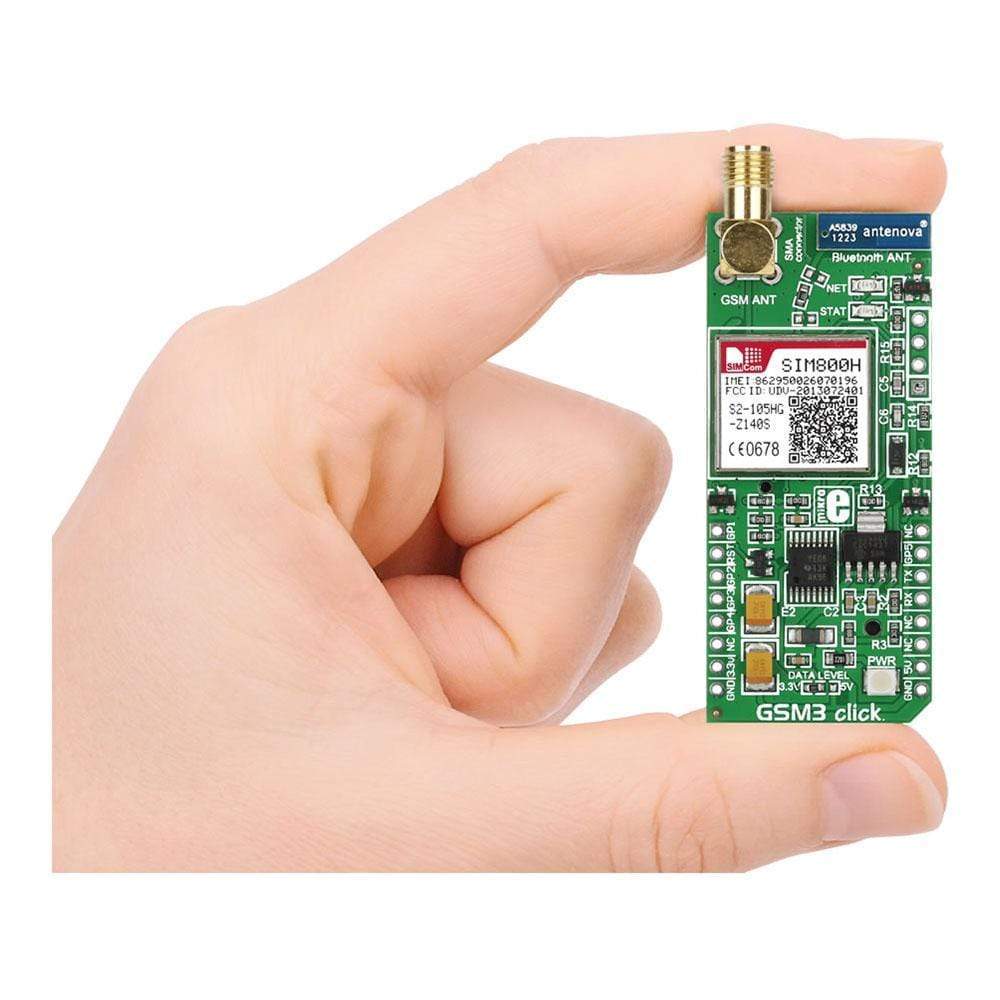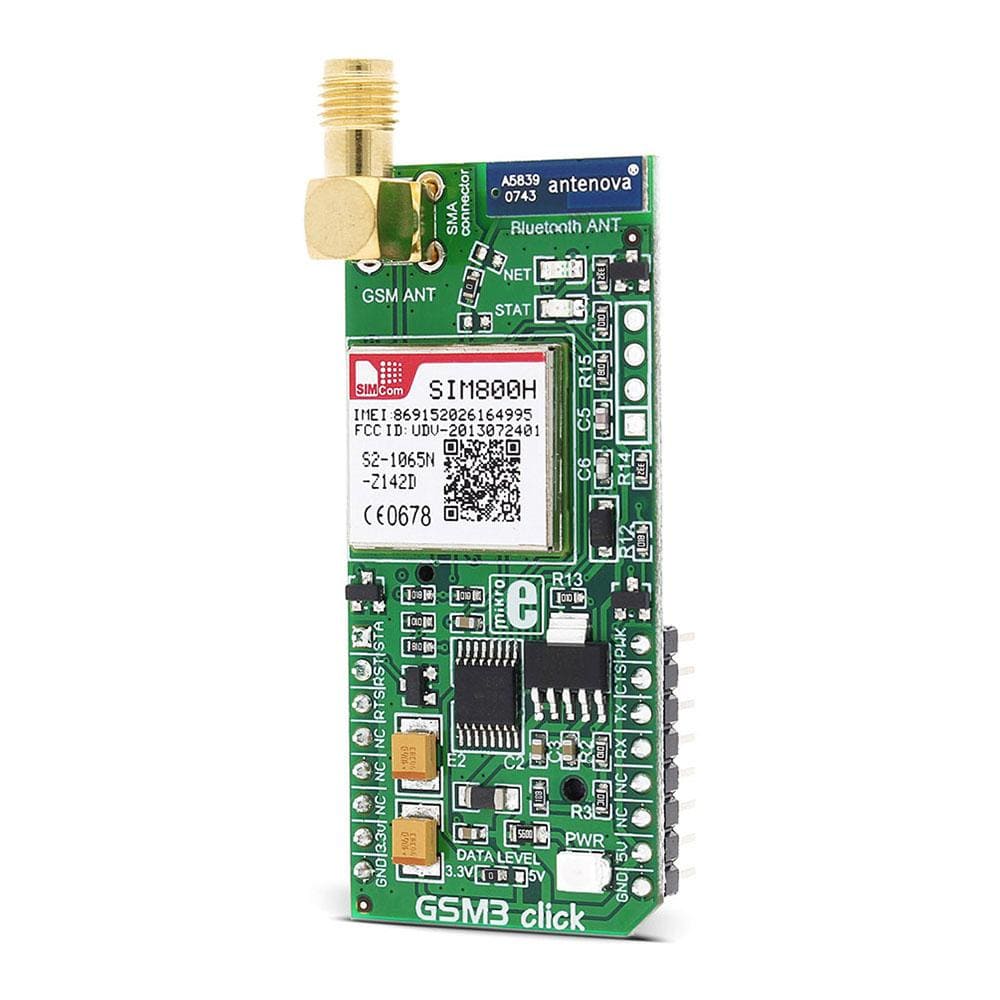
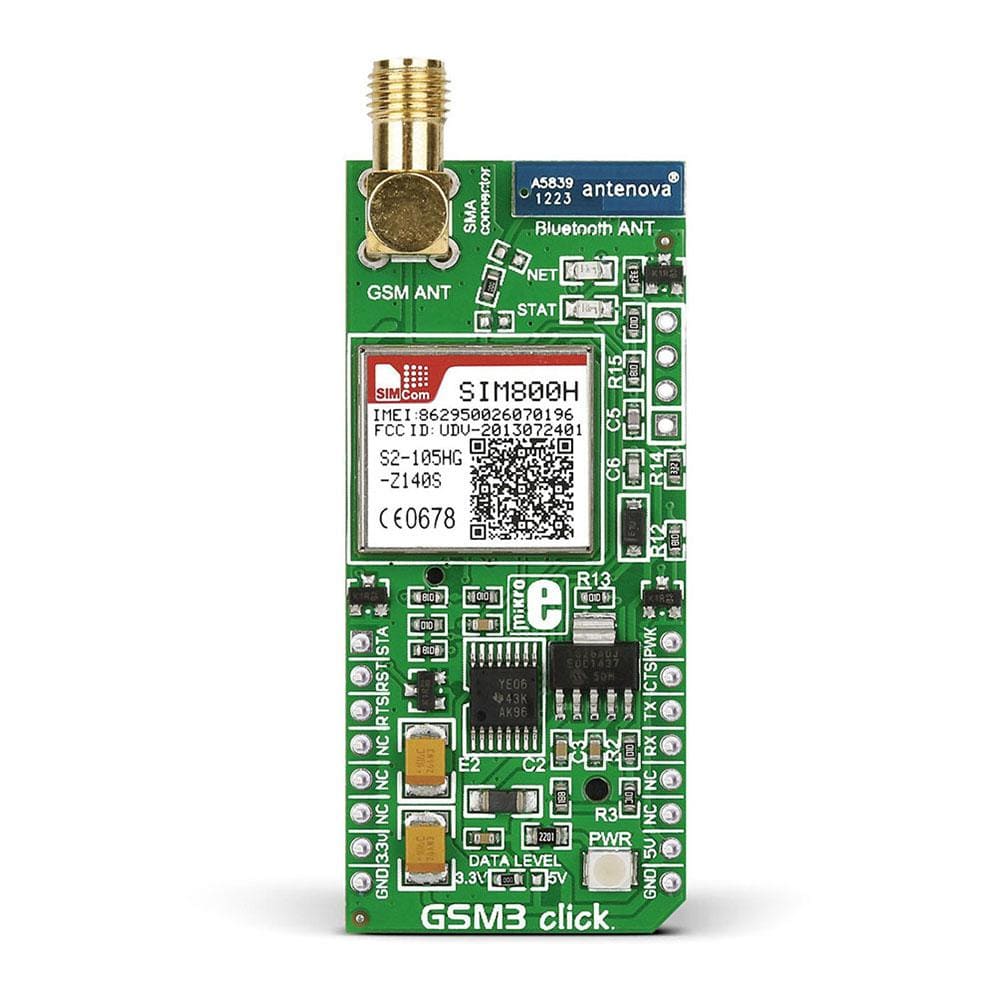
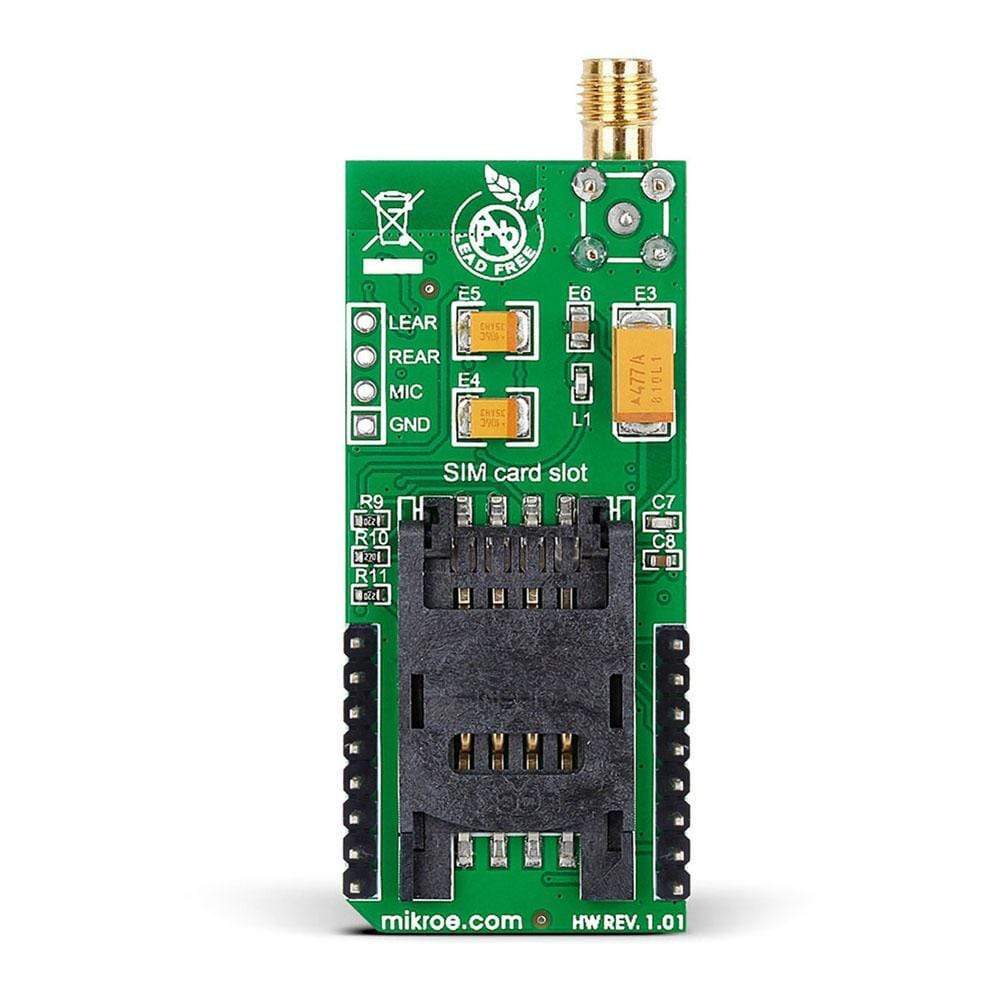
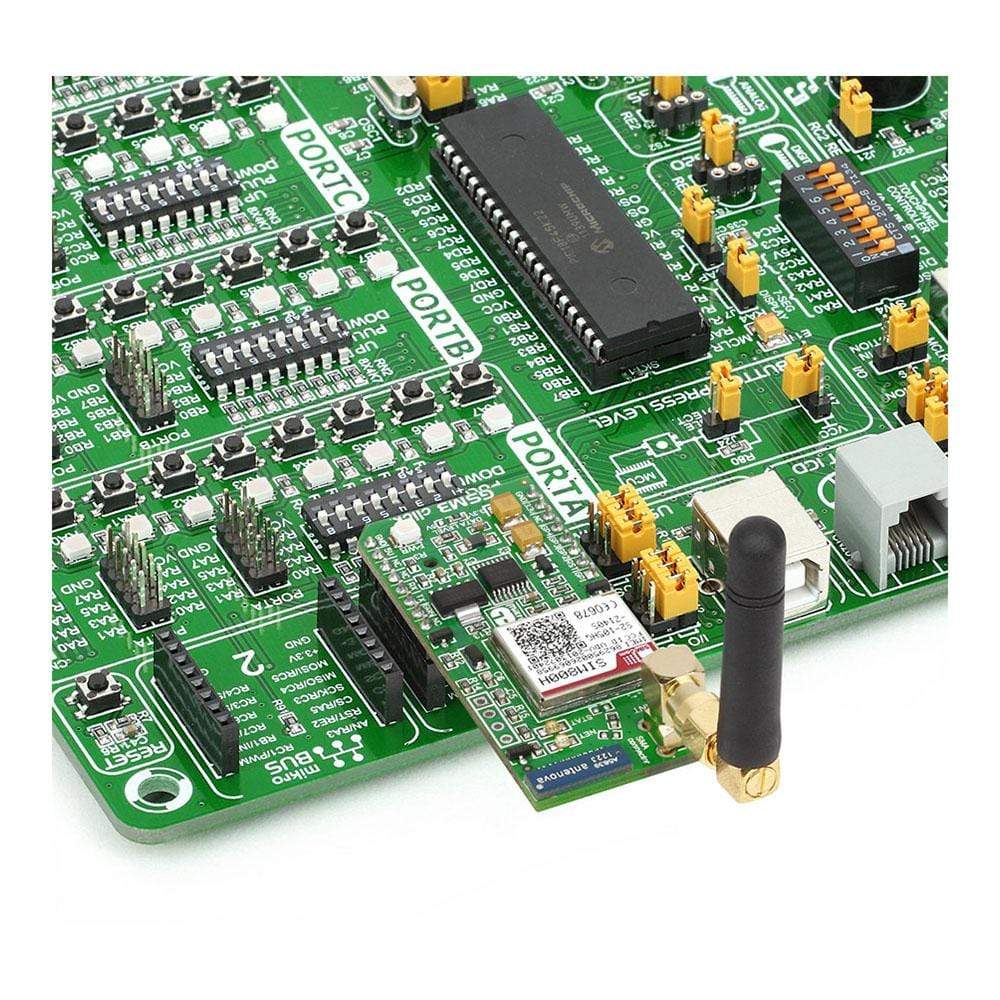
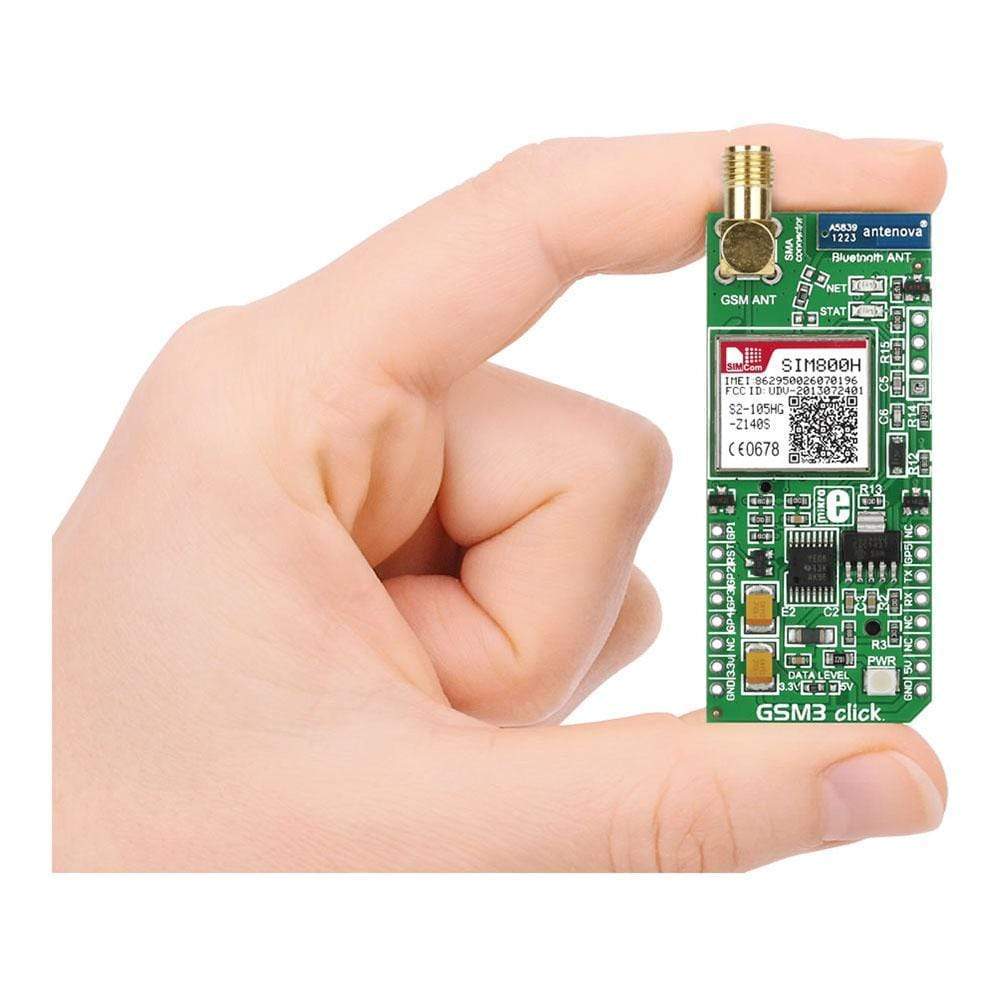
Overview
The GSM 3 Click Board™ is a complete quad-band GSM cellular network communication solution, featuring the SIM800H-BT, a quad-band 2G GSM/GPRS module. This module is GSM Phase 2/2+ compliant, featuring a full set of options for the cellular networking and communication. It has a network status indication, jamming detection, embedded internet protocols including TCP/IP, UDP, FTP, PPP, HTTP, E-mail, MMS, and more. It also features advanced voice/audio functions, including the FM radio interface. The GPRS multislot class 12 implementation allows 4 uplink and 4 downlink slots, with 5 slots open in total. Data communication speed is rated at 85.6 kbps for both uplink and downlink connection. An outstanding feature of this module is the support for the Bluetooth 3.0+ EDR protocol.
Downloads
Le GSM 3 Click Board™ est une solution complète de communication de réseau cellulaire GSM quadribande, comprenant le SIM800H-BT, un module GSM/GPRS quadribande 2G. Ce module est conforme à la norme GSM Phase 2/2+ et propose un ensemble complet d'options pour la mise en réseau et la communication cellulaires. Il dispose d'une indication de l'état du réseau, d'une détection de brouillage, de protocoles Internet intégrés, notamment TCP/IP, UDP, FTP, PPP, HTTP, E-mail, MMS, etc. Il dispose également de fonctions vocales/audio avancées, notamment l'interface radio FM. L'implémentation GPRS multislot classe 12 permet 4 emplacements de liaison montante et 4 emplacements de liaison descendante, avec 5 emplacements ouverts au total. La vitesse de communication des données est évaluée à 85,6 kbps pour les connexions montantes et descendantes. Une caractéristique remarquable de ce module est la prise en charge du protocole Bluetooth 3.0+ EDR.
| General Information | |
|---|---|
Part Number (SKU) |
MIKROE-1720
|
Manufacturer |
|
| Physical and Mechanical | |
Weight |
0.035 kg
|
| Other | |
Country of Origin |
|
HS Code Customs Tariff code
|
|
EAN |
8606015077468
|
Warranty |
|
Frequently Asked Questions
Have a Question?
Be the first to ask a question about this.

